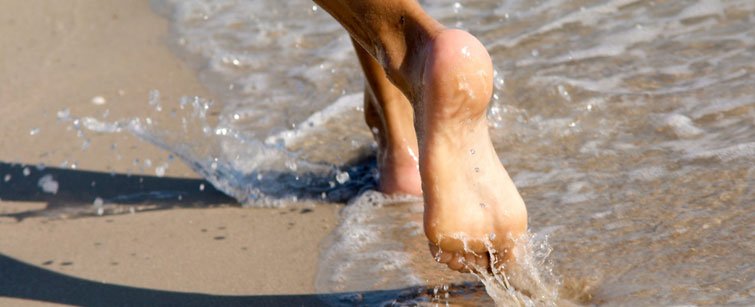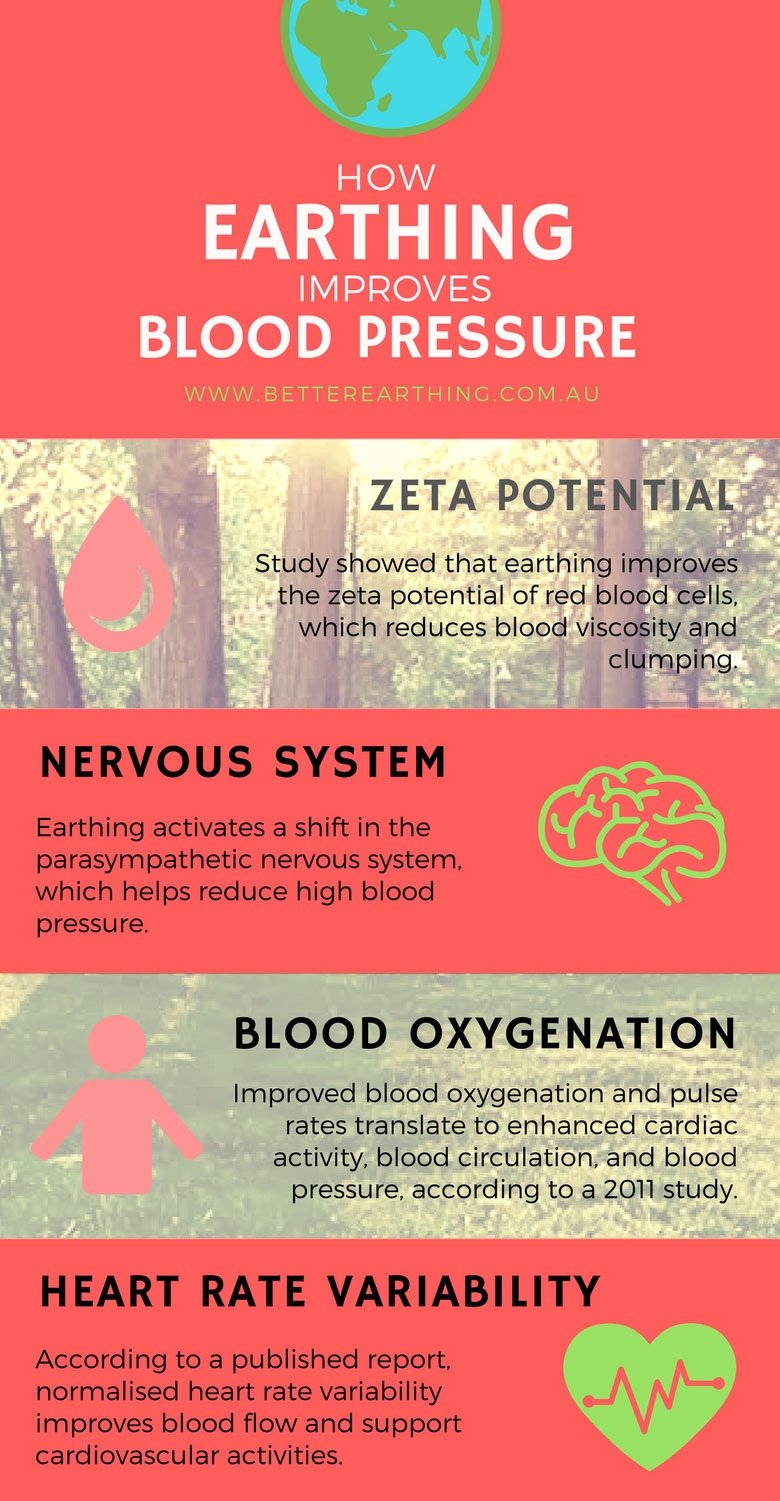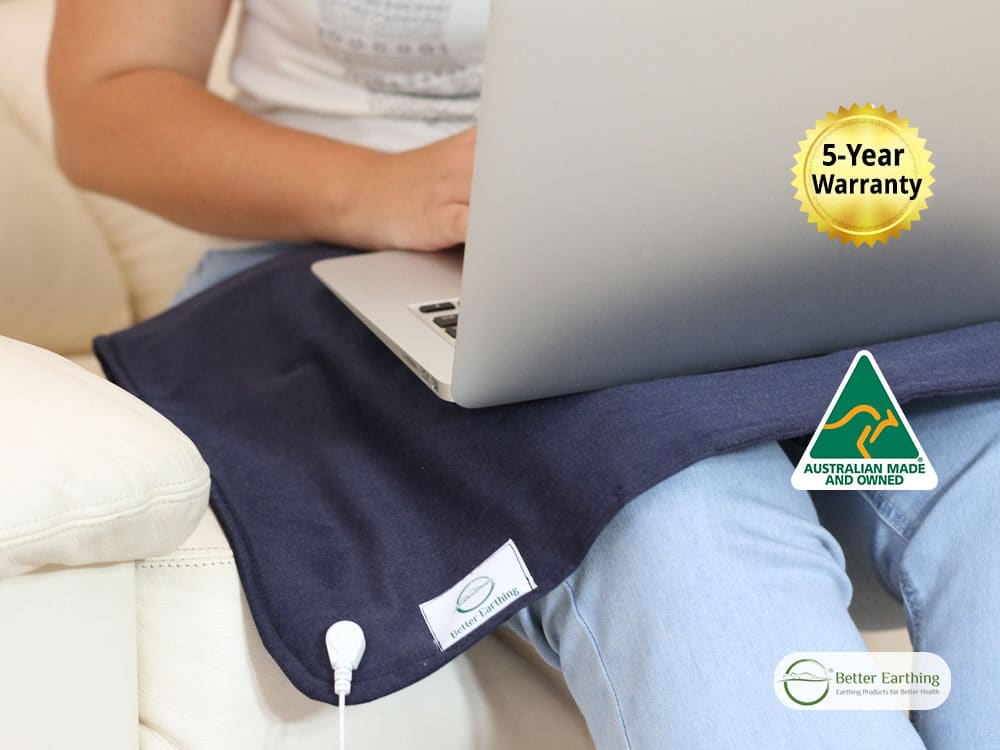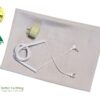You may have heard of earthing or grounding in context to electrical appliances and thunderstorms. However, earthing has another important application too, namely in the area of health and healing. Yes, earthing can heal you. In fact, earthing can help with many medical conditions including high blood pressure and heart disease.
High blood pressure is what your doctor would refer to as hypertension. Hypertension is a persistent blood pressure reading of 140/90 mmHg or above. The Australian health survey 2011/12 showed that about 4.6 million or 32% Australians aged 18 years and above had high blood pressure. The survey also found that men are more likely to suffer from uncontrolled or unmanageable hypertension as compared to women. Additionally, high blood pressure is the precursor of most cardiovascular diseases in more than 40% of cases.
Hypertension is a disease that requires medications for a lifetime in most cases. Sometimes, these medications require frequent changing and dose adjustments to keep high blood pressure under control. Earthing can help with hypertension by stabilising its fluctuations. Let’s see how.
Earthing and high blood pressure
As researchers come across new scientific advancements in every field, they have begun to realise that natural remedies passed down the generations aren’t just old wives’ tales. For instance, most of us dismissed honey as just another of grandma’s home remedies. Nevertheless, quite a few studies have shown that it’s as effective for coughs as some of the well-known ingredients in the cough syrups. Just the same, our ancestors were more connected to the earth by sleeping, walking, and sitting on the ground. They had the health benefits of earthing or grounding. Modern living has taken us away from mother earth. We’re the one’s missing out.
Why? because the earth’s surface holds a treasure trove of free electrons that enter your body when you connect to the earth. When you ground to the earth either naturally or with the help of an indoor earthing device, your body forms an electrical circuit with the earth. Yes, your body and the earth have electrical activities going on in and around them. Even the slightest batting of your eyelid produces certain electrical currents within your body, without which you wouldn’t be able to do even this simplest of tasks.
When we connect with the earth, potent free electrons from the earth’s surface enter your body. Meteorological activity and weather changes in the earth’s atmosphere result in the build-up of these electrons on the surface of the earth. Once inside your body, the electrons begin to nullify positive charges including free radicals. Read more about earthing and free radicals in What is Earthing and How Does It Work?. Importantly for high blood pressure, this free flow of electrons is also likely to improve the negative charge or zeta potential of your red blood cells.
Normally, red blood cells (RBCs) carry a negative charge on their surface, this allows them to deflect each other and not form groups or aggregations. This potential of the RBCs to deflect or repel each other is known as the zeta potential. This is good, because less RBC aggregations, means less blood viscosity or thinner blood and better blood circulation. When your circulation is working well, your heart pumps blood better, improving your blood pressure as well. In hypertension, the zeta potential of the RBCs is reduced and the cells form aggregations or clumps. This makes the blood thicker, and more difficult for the heart to pump. However, Earthing is likely to improve the negative charge or zeta potential of RBCs by providing them with potent free electrons consequently reducing clumping and lowering blood viscosity.
A pilot study by Chevalier, Sinatra, Oschman, and Delany, provides evidence on how Earthing reduces blood viscosity. They performed this study on 10 participants in 2013. The following short video clip demonstrates how grounding improves the zeta potential of the RBCs in the 10 participants. These participants were grounded for 2-hours using Earthing patches attached to their soles and palms. A single drop of blood was taken from each of these participants before and after grounding. Each of the blood samples was exposed to an electrical field and observed to evaluate the field’s effect on the red blood cells movements under a dark field microscope. The average zeta potential value among the 10 participants after grounding increased by 2.70, which is nearly 3 fold. The image on the left shows the RBC movements and clumping before grounding, whereas the image on the right shows less clumping, and increased blood flow after grounding.
In fact, Dr. Stephen Sinatra, a noted and highly sought after cardiologist, and Dr. Howard Elkin are currently doing research on the effects of Earthing on high blood pressure. This study is being conducted on individuals with hypertension between 30 and 80 years of age in Los Angeles, USA. We’ll bring you the results as soon as they are published.
Other scientific evidence
Chevalier and Sinatra’s 2011 study using 14 male and 14 female healthy subjects, recorded improved variations in blood oxygenation and pulse rates after two-hour grounding sessions. These results also show a strong link between the heart’s activity, blood circulation, and blood pressure and Earthing.
Chevalier’s 2010 double-blind study with 27 participants showed that earthing has a beneficial effect on heart rate variability. This suggests that something as simple and basic as Earthing is very likely to support the cardiovascular system.
How to improve your blood pressure with Earthing?
So, how do you get started with earthing? It’s as easy as going barefoot outdoors or using an indoor earthing product while you’re relaxing at home or are asleep in your bed.
If you’re on blood-thinning medications (like coumadin or warfarin) or have underlying cardiovascular disease, have a chat with your Doctor and ease into earthing under their guidance. Your doctor may wish to monitor your INR (blood clotting) levels in case your medication dose needs to be adjusted. Australian GP, Dr David Richards, an integrative doctor with a practice in Iluka NSW, says: ‘I find medication needs generally are reduced after earthing…I actually warn patients to be alert for improvement and be prepared to reduce some medications, such as blood pressure, thyroid, and glucose meds, in particular, blood thinners. For those on blood thinners, such as Coumarin, I do standard blood-clotting checks fortnightly [every two weeks] for about two months, and if the blood is stable, then do it monthly.’
Earthing is one of the simplest, natural ways to support heart health and blood circulation. So what are you waiting for?
References:
Chevalier G, Sinatra ST, Oschman JL, Delany RM. Grounding the human body reduces blood viscosity—a major factor in cardiovascular disease. Journal of Alternative and Complementary Medicine.
Chevalier G, Sinatra S. Emotional stress, heart rate variability, grounding, and improved autonomic tone: clinical applications.Integrative Medicine: A Clinician’s Journal. 2011;10(3)
Chevalier G. Changes in pulse rate, respiratory rate, blood oxygenation, perfusion index, skin conductance, and their variability induced during and after grounding human subjects for 40 minutes.Journal of Alternative and Complementary Medicine. 2010;16(1):1–7.







